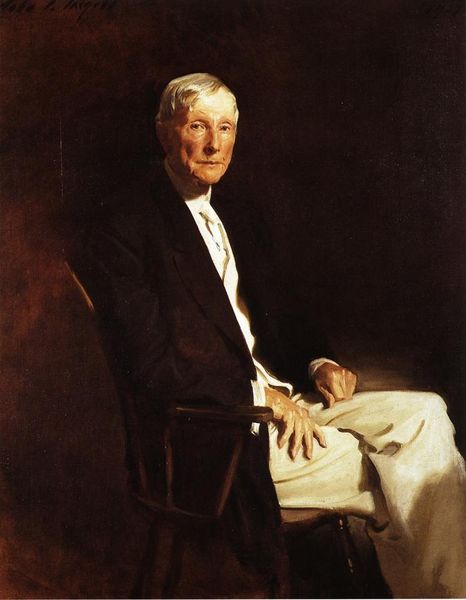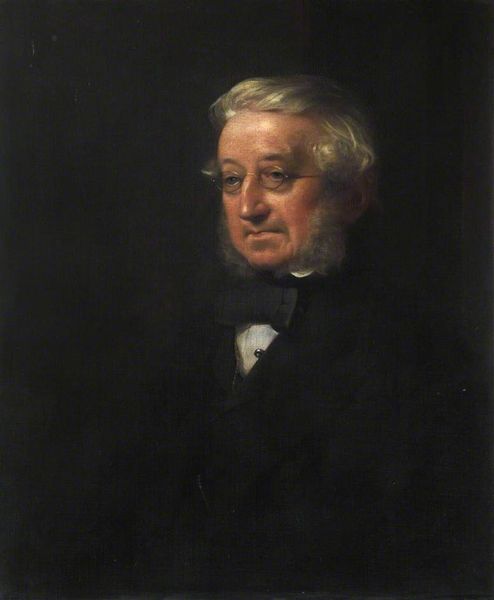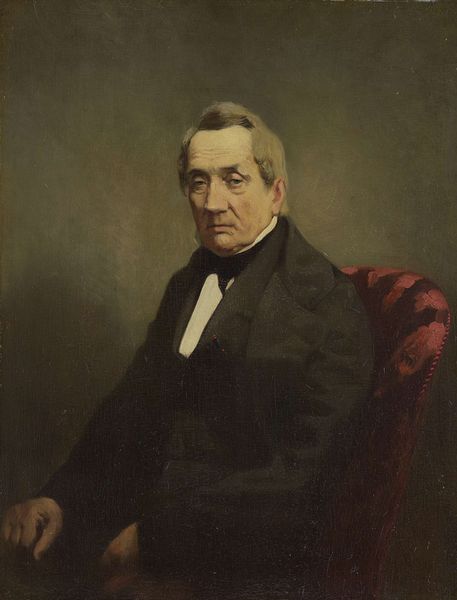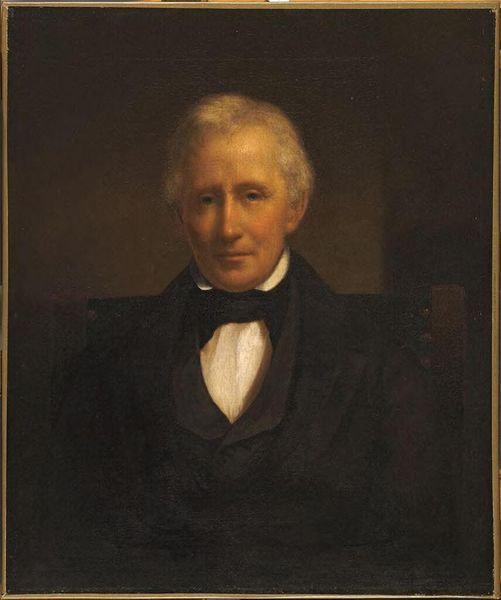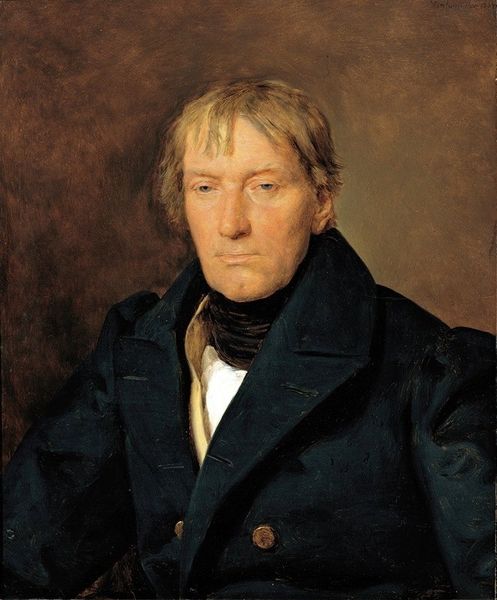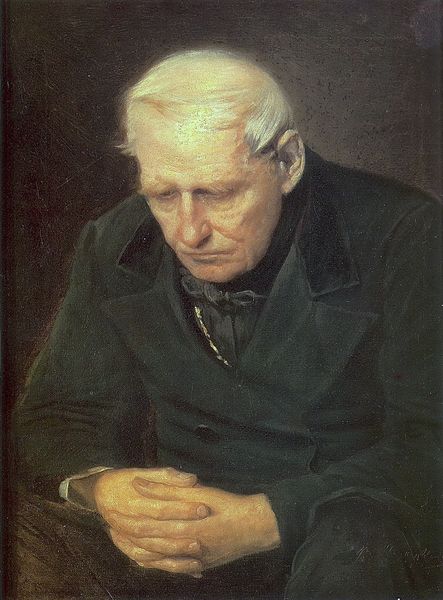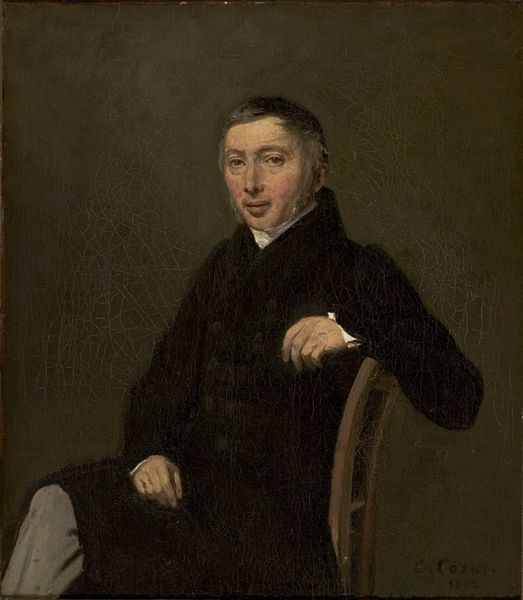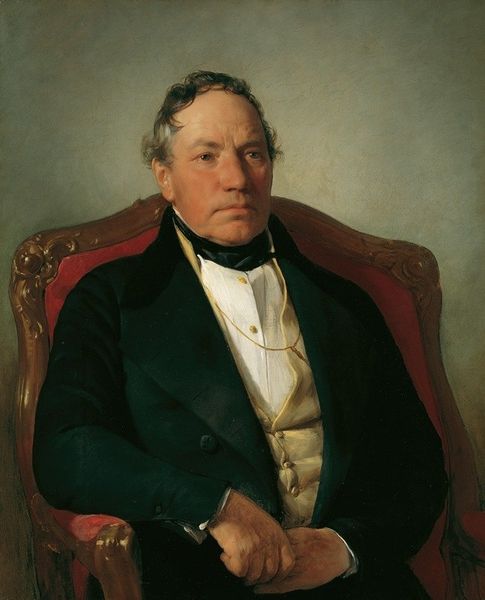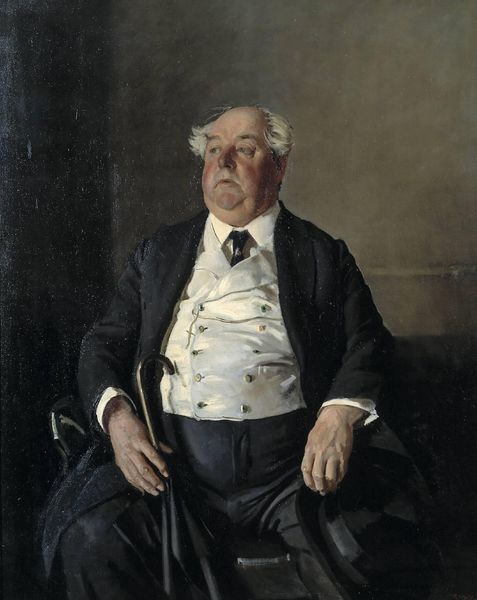
Copyright: Public domain
Edgar Degas painted this portrait of his grandfather, René-Hillaire De Gas, sometime in the mid-19th century. The most striking feature is the walking stick held across René's lap. Consider how often the staff or scepter appears throughout history: as symbols of authority held by rulers and religious figures. Think of ancient Egyptian pharaohs, and their crooks and flails, emblems of their power. The bishop's crosier and the conductor's baton are all descendants of this ancient association. Yet, in this more intimate setting, the cane seems to represent not authority, but the weight of age and experience. Degas presents his grandfather not as a figure of power, but as a man marked by time, inviting a collective memory of mortality and dignity. In our subconscious, we recognize these symbols, and they evoke feelings of respect, contemplation, and even melancholy. Symbols transform across cultures, yet the emotional intensity of the symbols remains and resurfaces, creating powerful connections between past and present.
Comments
No comments
Be the first to comment and join the conversation on the ultimate creative platform.
